#tarotthothmagickqabalahelitarotstrickingly.com
Above all things, know thyself.
A Western Hermetic Qabalistic Tarot Card Comparison Critique.

(Card Front illustration)
The Arcane Tarot-0-The Fool
Key words: New Journeys • Leaps of Faith • Holy Naïveté
Hermetic Framing:
In Western Hermetic Qabalah, The Fool corresponds to Aleph (א), the Path 11 between Kether and Chokmah, and the Element of Air. Aleph is the primal breath—the first out-rush of Spirit before form. In the Thoth current, The Fool is the “0 that becomes 2” (0=2): the undivided Life-Power that proliferates into polarity, then dances itself into a world. Read this Atu as the inhale of the whole tarot—Spirit drawing in possibility before the first step.
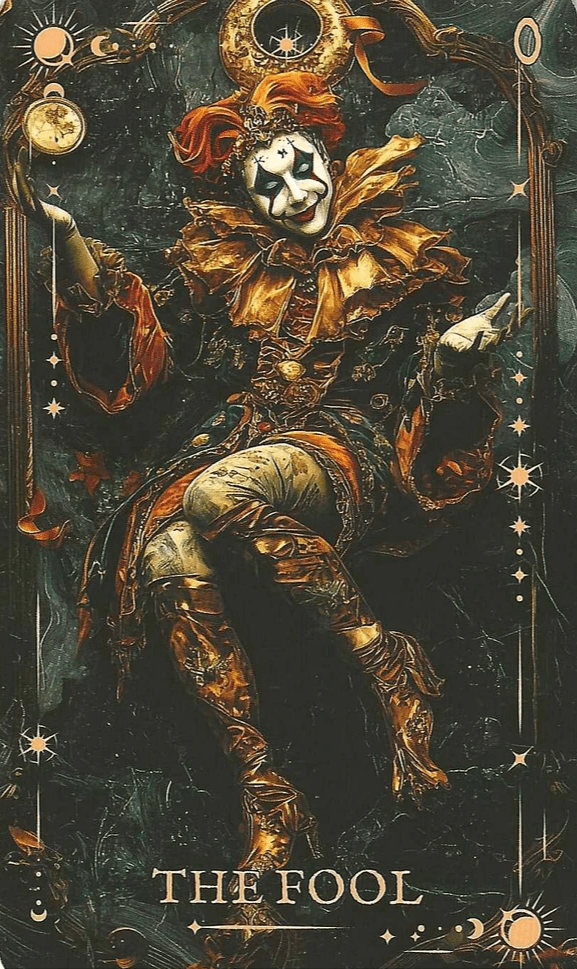
Image Note (Arcane Tarot)
Your Arcane Fool stands with the Sun at their back, face lifted skyward, oblivious to the cliff’s edge. This is the classic glyph of holy innocence: the soul thrilled by the music of its own star, unencumbered by precedent, not yet educated into fear. The Sun behind signifies Tiphareth’s solar genius urging the leap; the cliff before is the razor’s edge between inspiration and embodiment.
Core Meaning (Upright)
New Beginnings • Open Channel • Trust the Leap
The Fool upright signals threshold-crossing. Synchronicities appear; doors unlatch. Act before the mind overthinks the miracle. This is qualitative newness—not mere change, but first-light: a pattern that has never been lived through you before.
Relationships: A fresh chapter opens. For couples, shed stale roles and re-meet each other as if for the first time. For singles, a meeting approaches when you are most yourself—no mask, no rehearsal.
Career/Calling: Say yes to the project that scares you in the best way. Pitch, publish, apply, launch. Apprenticeship to wonder outranks perfection right now.
Hermetic Key: Let Air move. Breathe the path before you walk it. Inspiration precedes explanation.

Shadow/Reverse
Cliff-Blindness • Impulsivity • Untethered Air
The reversed Fool warns of reckless dispersion—Air without a vessel. Enthusiasm outruns discernment; important facts go unasked.
Practical counsel: Slow the gait, widen attention. Confirm the ground, not the dream alone. Pack light—but pack enough (resources, consent, timelines).
Relationships: Novelty seeking can mask avoidance. If you’re leaping, be honest about what you’re leaving.
Career: Vet the offer. Get terms in writing. A 24-hour pause saves a 24-week detour.
Hermetic Remedy: Give Air a form—a short plan, a simple budget, one boundary. The Fool doesn’t need a cage, only a container.
Comparative Lens (Arcane ↔ Thoth)
Thoth emphasis: The Fool as the raw creative surge—ecstasy, prana, green life-force erupting through Aleph.
Arcane emphasis: The pilgrim at the brink, Sun-backed and cliff-fronted—spotlighting the moment of choice.
Together they teach: joy is the engine; choice is the hinge. Let the Sun fill your lungs; let the foot meet real earth.

Qabalistic Micro-Map
Letter: Aleph (Ox) — the ploughing breath that furrows the field of being.
Path: 11 (Kether ↔ Chokmah) — from ineffable Crown to the primal Abba (dynamic wisdom).
Elemental Practice: Air — conscious breathing, openness, beginner’s mind.
Magical Formula: Not-knowing is the open sesame. Guard it from cynicism; temper it with one clear vow.
Reading Technique: Three-Tier Spread Prompt
What is the Leap? (Name the living opportunity, not the abstract goal.)
What is the Net? (One support, ally, or practice that makes the leap ethical and sustainable.)
What is the Vow? (A single line that keeps you aligned mid-air.)
Counsel for Practitioners
When upright appears with Disks: ground the idea immediately in one humble task.
With Swords: watch for rationalizations or narrative inflation; keep the story simple.
With Cups: trust the yes in your body—joy is evidence.
With Wands: strike while the iron is singing; pace the burn to avoid flash-fire.
Devotional/Pathworking Cue
Close your eyes and inhale for a slow count of 11. On the breath-hold, silently intone ALEPH once. Exhale with the image of sunlight filling your footprints before you step. Open your eyes and take one small action in under five minutes. The Fool blesses immediacy.
Affirmation
“I welcome the first-light. I breathe, I vow, I step.”

1. The Linguistic Root of “Atu”
For those who wonder why Aleister Crowley called the Major Arcana-ATU instead of Keys, let me explain.
The term “ATU” is derived from the Egyptian word Aat or Atu, meaning “House” or “Mansion.”
In the Book of Thoth, Crowley explicitly translates Atu as House — as in “The House of the Spirit” or “Mansion of the Path.” Thus, each Major Atu represents a “House” of spiritual force on the Qabalistic Tree of Life — a station or chamber within which consciousness experiences a distinct formula of divine energy.
Where others saw the Majors as “keys” unlocking the doors of understanding, Crowley saw them as the very temples themselves — each Atu a dwelling place of the Divine Mind.

2. Qabalistic and Thelemic Implications
In Western Hermetic Qabalah, every Major Arcana corresponds to a Path connecting two Sephiroth on the Tree of Life.
A “path” is not merely a key to understanding — it’s a current of energy one walks through, a “House of Force” or “Atu” of experience.
Calling them “Keys” (as the Golden Dawn, the Arcane and Waite did) implies the cards are tools to open doors.
Calling them “ATU” implies the cards are the doors — and the rooms, and the experience of walking through them.
In this way, Crowley’s terminology expresses a more embodied and initiatory model of consciousness — one in which the aspirant doesn’t unlock wisdom from afar, but inhabits it through gnosis and direct spiritual experience.
3. The House of the Gods
Crowley’s Egyptian orientation also ties Atu to the Houses of the Gods.
Just as the zodiac has its Houses, so too do the Atus represent mansions of the Soul’s pilgrimage through the heavens. Each Atu is a divine locus — a House where a god or archetypal energy dwells and acts through the adept’s psyche.
For instance:
ATU 0 – The Fool (Aleph): The House of the Breath of Life, or the primordial Spirit before form.
ATU I – The Magus (Beth): The House of the Word — the Logos by which creation is shaped.
ATU II – The Priestess (Gimel): The House of the Virgin Womb — the path of lunar reflection and the veil of initiation.
Each is not just a “lesson” but a dwelling for meditation, a living temple of that specific divine formula
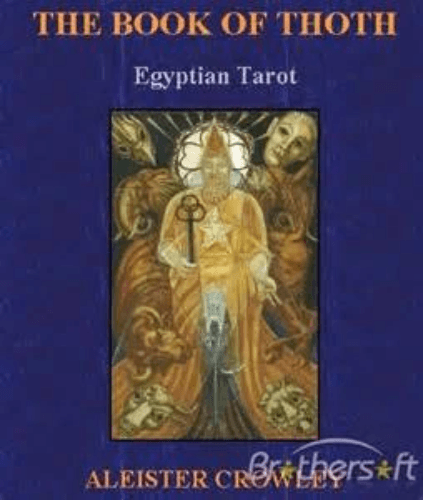
.
4. The Initiatory Model of the Thoth Tarot
Crowley saw the Tarot not as a fortune-telling device but as a Book of the Paths of Initiation — the Book of Thoth itself.
Thus, to him, each ATU was a Path-Temple, and the entire series of 22 Atus represented the architecture of the initiatory universe — the spiritual anatomy of Adam Khadmon (the Heavenly Human).
By using the Egyptian term “Atu,” Crowley also broke from the Christianized terminology of “Keys,” which implied a patriarchal gatekeeper model (“Peter holds the Keys to Heaven”).
Instead, the Atus are universal, pre-Christian, Hermetic temples within the body of the cosmos.
5. Hermetic Summary
| Concept | Golden Dawn / Waite/Arcane | Crowley / Thoth |
|---|---|---|
| Term | “Keys” | “ATU” (House, Mansion) |
| Implied Function | Unlocking occult knowledge | Dwelling within the energies of Divine Consciousness |
| Qabalistic Role | Keys to the Paths | Houses or Temples of the Paths |
| Symbolic Model | Intellectual revelation | Experiential gnosis and embodiment |
| Philosophical Base | Rosicrucian-Christian Mysticism | Egyptian-Hermetic Thelema |
6. The Formula of ATU 0
Finally, note that ATU 0, The Fool, is itself the House of All Houses.
Its number 0 contains all potential, and its Hebrew letter Aleph (א) means “Ox” — the beast of burden that plows the field of manifestation.
Hence, the 22 Atus can be viewed as 22 Houses within the One House of Aleph, mirroring the 22 letters of the Hebrew alphabet that build the universe.
In summary:
Crowley used ATU instead of “Key” because, in his Thelemic-Hermetic system, the Tarot’s Major Arcana are not keys to open doors — they are the temples themselves, the Houses of the Gods where Spirit experiences its own unfolding. Each Atu is a living mansion of consciousness through which the initiate travels on the path to divine realization.

Thoth- ATU 0- The Fool (Atu 22)
The Thoth Tarot: The Soul’s Journey through Qabalah and Thelema
The Thoth Tarot, conceived by Aleister Crowley and painted by Lady Frieda Harris, remains one of the most profound and symbolically intricate Tarot decks ever created. Designed between 1938 and 1943, it unites Crowley’s expansive esoteric wisdom with Harris’s visionary art, forming a sacred bridge between Hermetic Qabalah, Astrology, Alchemy, and Thelema.
The Vision and the Work
Crowley described the Tarot as “a pictorial representation of the Forces of Nature,” and under this axiom, Lady Harris translated invisible metaphysical truths into radiant, living forms. Every brushstroke is a glyph of consciousness; every color a vibration of a higher formula. The deck is, in truth, a Book of the Soul — an illuminated manuscript of the Self.
The Qabalistic Foundation
The Thoth Tarot is inseparable from Western Hermetic Qabalah, the living framework of Divine Emanation. Each card corresponds to a Sephirah or a Path on the Tree of Life, depicting the descent and ascent of consciousness between the Infinite (Ain Soph Aur) and the material world (Malkuth). The deck thus serves as both map and mirror of the initiate’s return to divine unity.
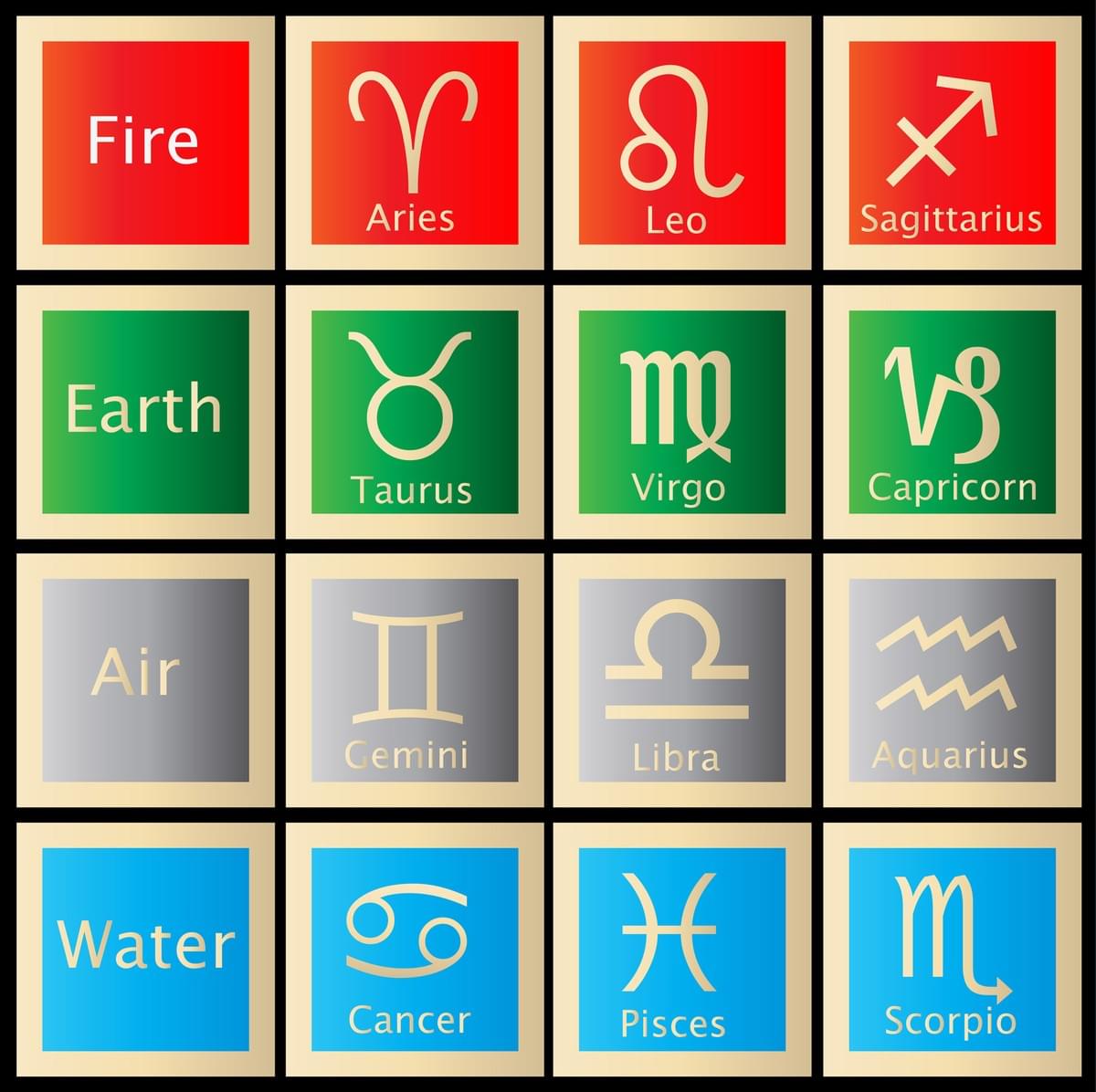
The Astrological Web
Crowley’s genius also wove the stars into the cards. Each Major Arcana resonates with a planet or zodiacal sign, while the Minor Arcana express the planetary forces within the elemental suits. Through this celestial matrix, the Thoth Tarot becomes an alchemical calendar — the celestial mechanics of the soul.
The Path of Thelema
Infused with Crowley’s Thelemic Law — “Do what thou wilt shall be the whole of the Law. The Law is love. Love under will"— the deck transcends prediction to become a mirror of True Will. It invites the aspirant to align with their inner star, to awaken the solar consciousness within Tiphareth, and to embody the maxim: “Love is the law, love under will.”
The Fool: Alpha and Omega of the Tarot
At the heart of the Thoth system stands The Fool (Aleph, 0) — the ineffable Spirit, the seed of all manifestation. Every card in the deck is a differentiated aspect of The Fool’s energy. The 78 cards thus represent 78 reflections of your own psyche — facets of the same infinite spark that journeys through shadow and light, folly and wisdom, death and rebirth. The Fool begins where it ends, ever leaping into the Abyss of potential, echoing the cosmic paradox of 0 = 2.
Controversy and Mastery
For some, the Thoth Tarot’s intensity and esoteric density can be daunting, even controversial. Yet to the Hermetic practitioner, it is a living grimoire — a system of initiation encoded in art. Mastery of this deck is not merely intellectual; it is transformative gnosis, the inner alchemy by which consciousness refines itself through understanding.
In essence, the Thoth Tarot is not a deck but a mystery school in miniature. It is a dialogue between heaven and earth, spirit and matter, Self and God. To study it is to take up the path of the Magus, walking the labyrinth of your own light.


The Path of Aleph: The Breath of Spirit between Kether and Chokmah
As a Path, THE FOOL (Aleph, א) bridges Kether (1 – The Crown) and Chokmah (2 – Wisdom). To the Qabalist, Kether is the Source of All Being—the unmanifest potential, the pure “I Am” before thought or differentiation. Chokmah, the first emanation from this boundless Light, is Abba — the Divine Father, the Logos that initiates motion. Thus, in this first path of the Tree of Life, the Eternal 0 flows into the First 2, and the mystery of 0 = 2 begins.
Here, the limitless unity of Spirit (Kether) divides itself to know itself — the primordial act of creation, where Self beholds Self and Love becomes the medium of manifestation.


The Ox and the Breath
The Hebrew letter Aleph, meaning Ox, signifies the ploughing force of breath that opens the field of creation. The Ox is patient, steady, and enduring — a symbol of the creative will yoked to purpose. In this, Aleph is both the first inhalation of life and the breath of divine intent, setting the entire Tree of
Life into motion.
Aleph is also the silent letter — the unspoken breath before utterance. It is therefore the soundless sound, the vibration that holds all potential tone. To meditate upon Aleph is to feel the Spirit breathing through you before thought defines it — before the Word (Beth) shapes form.

The Holy Spirit and the Dove
Crowley’s Thoth Tarot depicts this current through the dove, the emblem of the Holy Spirit — not as the Christian moral construct, but as the universal creative breath descending through every plane. The dove descends not from heaven above, but from the invisible Crown (Kether) into the manifesting Wisdom (Chokmah), awakening the primal motion of the universe. It is the first electric surge of Life moving into Light.
The Phallic Mystery and the Divine Androgyne
Crowley often described Aleph as a phallic current — the projecting force of creative Will. Yet this is not merely biological symbolism; it’s metaphysical. The Phallus in Hermetic Qabalah is not gendered flesh, but directed consciousness, the beam of light that pierces the void. Where Crowley’s language may seem overly masculine, the deeper principle remains androgynous — the Father’s projection cannot exist without the Mother’s receptive field.

In this way, Aleph is not male or female but bisexual in nature — the union of opposites contained within the One. It is the seed and the womb, simultaneously.
The Quantum Analogy
In the language of modern metaphysics, this path could be seen as the interface between the photonic and electromagnetic universes — where Light (Kether) collapses into dynamic waveform (Chokmah). The Fool’s leap is the first quantum transition, the crossing from infinite potential to measurable existence — Spirit learning to express as matter through vibration and polarity.
The Lesson of the Fool’s Path
Thus, the Fool’s Path of Aleph is the flow of the Life-Breath through all worlds. It teaches that Spirit must fall into experience to know itself, and that innocence is not ignorance but unconditioned awareness.
The Dove of Spirit descends not to rule, but to awaken the sleeping atoms of the soul.
Meditation on Aleph
Sit with the breath.
Inhale through the crown; exhale through the heart.
Feel the movement of Light becoming Life.
Whisper: Aleph… I Am the Breath between Worlds.
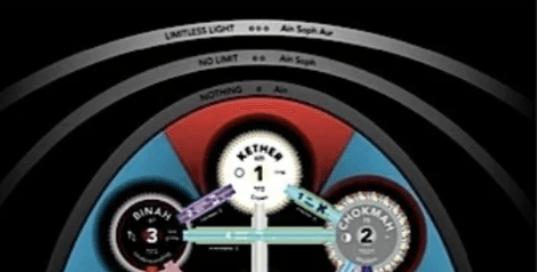
The Fiery Darkness of Aleph: The Fool as the Scintillating Intelligence
To even begin understanding THE FOOL, one must entertain a multifaceted and fluid contemplation of Will, Force, and Form — for all three are undivided in the primordial Breath of Aleph. Before the Word, before the vibration, there was the limitless radiance of Ain Soph Aur — the Infinite Light — whose brilliance is so boundless it appears to us as Darkness.

Dr. Paul Foster Case, founder of the Builders of the Adytum (B.O.T.A.), calls this Eleventh Path the Fiery or Scintillating Intelligence. The description is precise, for this path borders upon Ain Soph, the Limitless Light beyond the Supernal Triad. It is the threshold between being and non-being, where pure potential begins to tremble into motion.
Here, light without mass is perceived by finite consciousness as darkness. What we call “dark energy” — invisible, infinite, nonlocal — is but the motion of the Unmanifest, the spark of the Eternal that has not yet become flame. This is the Fiery Darkness, the Luminous Shadow of Kether.
It is not the light of the Sun, but the pre-solar fire — the potentiality of luminosity itself. Aleph, the Ox, ploughs this field of darkness with the furrow of Will, preparing the soil of manifestation. Hence, The Fool is the unborn impulse of the Divine Creative: the Spirit before motion, the Will before direction, and the Force before form.
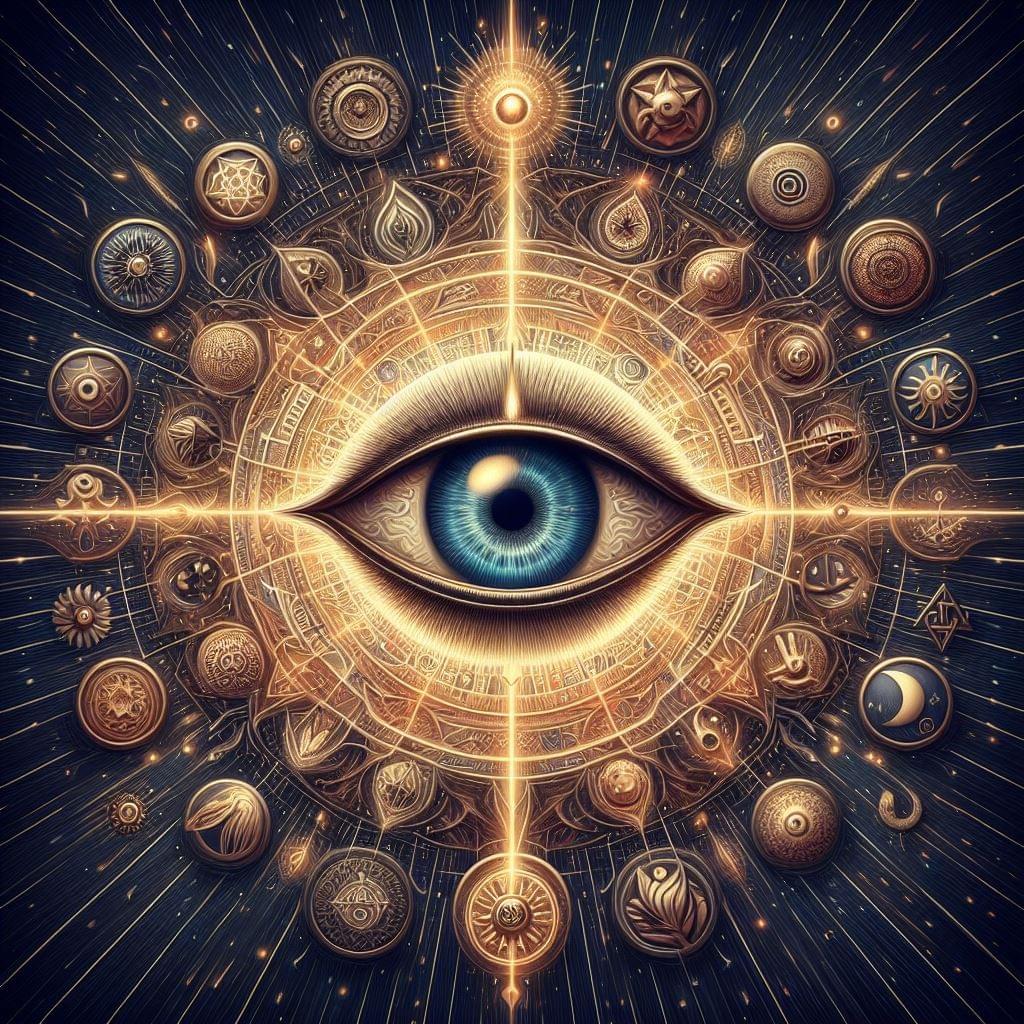
The First Perception of the One
At this most subtle level of awareness, the One becomes aware of its own potential to act — the first self-perception, the mirror-stirring of Being within Nothingness. It is the first quiver of consciousness that will later descend through Chokmah and Binah, crystallizing into the architecture of the Tree of Life.
Therefore, the Fool’s laughter is the sound of the universe awakening to its own dream. The “madness” of the Fool is the joy of Spirit discovering motion, unburdened by identity, purpose, or outcome. Crowley wrote:
“The Fool is the Spirit in search of experience… his is the innocence of the godhead, the creative breath.”
The Scintillating Path
To meditate upon this path is to feel the sparking of the Infinite within oneself — the scintillation of divine consciousness before thought, the shimmer before light fully condenses. It is a path of first awareness, which is why Aleph is said to contain all paths within itself, as the Breath from which all emanate.
Hence, THE FOOL is not foolish — it is free.
Unbounded, uncontained, and undefined, it is the laughter of Kether before self-awareness fractures into duality. It is the vibration of joy that precedes the universe, the eternal “I Am” dancing as “I might become.”
Hermetic Reflection:
“The Fool is the seed of all becoming, the flash of awareness between silence and sound.
The Fiery Darkness is not the absence of Light — it is Light unmeasured.”

The Fool and the Magus: The Eros of Creation and the Limits of Analogy
In the context of masculine electric sexuality, The Fool represents the Testes — the reservoir of creative potential, symbolized by the three flowers beneath the open legs of the Thoth Fool. These blossoms are the seeds of universes yet to be spoken into form, the pure vitality of Spirit before it takes on aim or definition.
By contrast, The Magus (Beth) represents the Phallus — the projective Will that directs the first current of creation. Where the Fool is potentiality without direction, the Magus is direction without resistance. The Fool overflows; the Magus channels. This progression illustrates the primal sequence of manifestation:
Aleph (The Breath) → Beth (The Word).
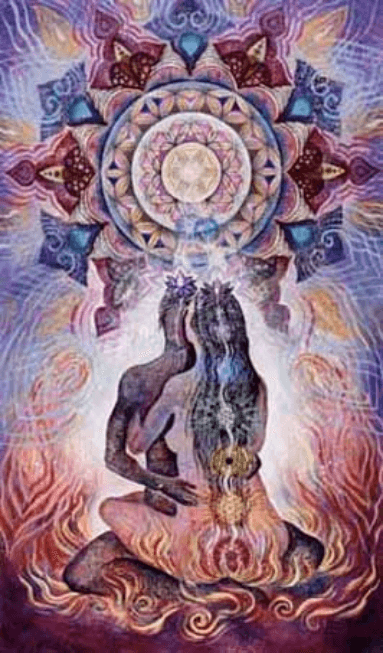
The Sexual Current as Cosmic Analogy
In Hermetic symbolism, sexuality is never merely biological. It is the electro-magnetic mystery of polarity—the creative tension by which the Infinite expresses itself through the finite. Thus, when we speak of “masculine” or “feminine” in this context, we refer not to gender, but to the dynamic of projection and reception, outflow and inflow, charge and field.
In this sense, the Fool as Testes is the supernal seed-field of Aleph—the limitless potential of the Spirit before differentiation. The Magus as Phallus is that same potential now polarized into active direction, the Logos that projects the vibration of creation.
But to stop here, as if Spirit were only masculine or generative in one direction, is to mistake metaphor for metaphysics.
The Limit of the Analogy
The Ain Soph, the Limitless, is No-Thing—not a male principle, not even a synthesis of opposites, but beyond polarity itself. All such analogies, even the sacred sexual ones, are the mind’s translations of the untranslatable. They serve as living metaphors to help consciousness engage with the ineffable, but they can never exhaust its meaning.
Every Qabalistic image, every divine “father” or “mother,” every phallic or yonic symbol, is a mask of the One Light. The moment the aspirant believes the mask is the Light, the current freezes. Thus, while it is illuminating to read the Fool as the Testes and the Magus as the Phallus in the circuit of creative will, we must remember that the One Power transcends even these polarities.
Crowley himself hints at this when he writes in The Book of Thoth:
“The Fool is the negative issuing into manifestation; The Magus is its positive expression.”
Yet both, taken together, are expressions of Ain Soph Aur, whose true nature is not dual but unborn—a radiance without subject or object.
The Mystery of the Pre-Sexual One
Before there is electric and magnetic, masculine and feminine, emission and reception, there is the Silent Breath—the Aleph that precedes polarity. The One is neither Father nor Mother until it imagines itself as two.

In that instant of divine curiosity, sexuality is born — not as human instinct, but as the mechanism of manifestation itself. The universe becomes an act of sacred intercourse between the unmanifest and the manifest, between thought and experience, between zero and one.
Hence, all sexual imagery in the Tarot is a sacred code for emanation, not a literal description of divine anatomy. The testes, phallus, womb, and yoni are symbols of the constant cycling of Will through Form, Spirit through Matter, Breath through Word.
Hermetic Reflection
“The Fool laughs because he is neither male nor female, but both — the seed before division.
The Magus speaks because division has begun, and with it, the play of creation.
Yet the One behind them smiles still, knowing all opposites are Its own breath in motion.”

The Imagination of the Void: Dark Energy as the Womb of Thought
We may reason that the potential for thought arises from what modern cosmology calls Dark Energy—the invisible dynamic of the unmanifest—and that its first condensation into subtle density is Dark Matter, the First Material of the cosmos. In Hermetic language this is Ain Soph Aur thickening into Kether, the luminous darkness that precedes every photon of awareness.
From this fertile obscurity emerges the Light Mind—the first photon of consciousness, the Logos that gives shape to possibility. Light, being both wave and particle, is the perfect emblem of imagination poised between potential and form. The very word imagination—I-magi-nation—reveals its mystery: the “nation of magi,” the field where archetypal images gestate before incarnation. It is the Womb of Thought-Forms, transcending the limits of reason, for reason can only act where measure exists.
Yet reason’s frustration is sacred. When the infinite eludes comprehension, the mind is compelled to invent instruments of measure—language, symbol, number—to give definition to the ineffable. This act of defining is the coagula of the alchemist, the slowing of divine imagination into structured manifestation. Thus the Fool’s airy potential becomes the Magus’s articulated Word; vibration condenses into geometry, and geometry into matter.
From this perspective, all things are first “just imagination,” images suspended in the luminous void, until the measuring mind assigns boundary, mass, and time. Manifestation is therefore frozen imagination—Spirit caught in the lattice of its own symbols.
The Fool’s lesson is to remember the source of that lattice: every solid thing is still dreaming, every form still breathing its original idea. To create consciously is to dream while awake, knowing measurement is only the spell by which the Infinite chooses to be seen.

The Fool as Limitless Awareness: The Divine Dreamer Awakening
Limitlessness eludes the grasp of reason, for it cannot be confined by thought. Yet within the language of the Mysteries, THE FOOL stands as the emblem of the primal, unbounded potential—the first stirring of awareness that exists beyond the veil of rationality.
When we sleep and the gates of mundane consciousness swing open, we catch glimpses of this Reality: images without measure, impressions ungoverned by logic. Dreams seem senseless only because they speak the language of the Infinite, while reason listens for grammar that does not exist there.
Here is where Tarot, the alphabet of the Soul, becomes our sacred interpreter. Each card is a hieroglyph of consciousness, enabling the finite mind to converse with the Infinite.

The Great Work and the Measure of the Immeasurable
The Great Work is not the pursuit of survival’s illusions, nor the maintenance of identity’s fragile scaffolding, but the assimilation of the Real—the marriage of As Above, So Below.
The substance of Self is not built from what the ego hoards, but from the immeasurable Source that continually dreams Itself into existence. From what is Not emerges what Is. We are, in truth, the measured dreams of our own divine potential, the Spirit’s imagination crystallized into experience.
Thus, the active, passive, and instinctive powers symbolized by The Fool mirror the cosmic dance of the Universal Collective Unconscious—what the Vedas envisioned as Vishnu Yoganidra, the god asleep upon the infinite waters, whose dreaming heart beats universes into being.
The Lucid Dream of Creation
To perceive the Universe as the Divine Dreaming Itself—Darkness dreaming Itself into Light—is to pass beyond human conception. Yet the greater revelation is this:
you are a lucid dreamer within that dream.

Each of us is an emanation of the Divine Creative, endowed with the power of observation. Observation alters the observed; awakening alters the dream. This is the true magic of consciousness—the alchemy of awareness transforming potential into form.
To awaken, then, is not to flee the dream but to dream knowingly, to participate in creation as a conscious co-creator. It is to remember the Divine Witness within, whose seeing sanctifies all phenomena.

The Mystery of Vishnu-Yoganidra
Here, the Hermetic and the Vedic merge:
The Fool is the Vishnu who sleeps, the infinite potential folded within stillness.
The Magus is Vishnu awakening, shaping the dream through the Word.
From the silent pulse of that slumbering heart, worlds are dreamt.
From the awakening breath of that same heart, the cosmos begins to dance.
Hermetic Reflection
“To awaken is to remember that you are both the dreamer and the dreamed—
the light that watches the darkness imagine itself into form.”

Daath: The Womb of Thought and the Dreamer’s Self-Awakening
Thus, your Divinity is rarely recognized by the mundane, who mirror only the profane fool—the one blind to the sacred Fool’s wisdom. Yet within you lies the Womb that gives birth to thought, the hidden matrix through which the “image of God” is conceived. This unseen matrix is the invisible Sephirah, Daath (Knowledge)—the secret doorway between the upper and lower worlds of the Tree of Life.
Daath is the meeting place of God and Goddess, where Chokmah (Wisdom) and Binah (Understanding) face one another in the ecstatic union the Tibetans call Yab Yum. It is here that the Path of Daleth—the EMPRESS—unfolds, the portal through which the Feminine Creative Principle gives birth to Mind and Form alike. In every act of thought, this mystery re-enacts itself: the silent understanding of Binah receives the lightning of Chokmah, and from their embrace arises the Word, the pattern of creation.

Your Spiritual Birth Mother, the Great Sea of Binah, is the Eternal Understanding—She who receives all motion into the stillness of comprehension. Through Her, the formless becomes form, the unknowable finds structure, and Spirit begins to remember itself through reflection.

The Dream of “I Am”
Here also dawns the ancient paradox: the One dreams of “Other.”
In the mirror of Daath, the unspoken “I” dreams that it is—and the syllables of that dream become I Am. Thus is born the equation 0 = 2: the No-Thing dividing itself into knower and known, subject and object, dreamer and dream.
The “I” is the Dreamer, inseparable from the Dream itself.
The “Other” is the awakened Witness within the Dream—the aspect of the One that observes, interprets, and thereby transforms what it beholds. Observation is not passive; it is alchemical. The Observer and the Observed are folds of the same luminous fabric, continually reshaping one another through awareness.
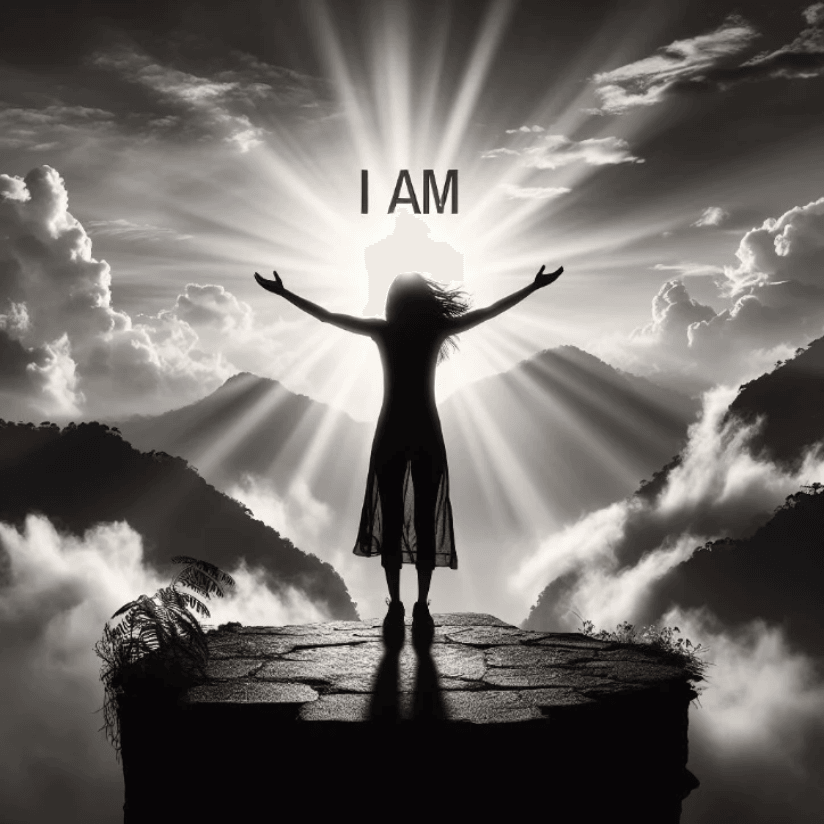
The Operative “I Am”
“I Am” is the Divine Creative speaking through every level of existence.
Yet what “I Am” means remains theoretical until it manifests through an operative avatar—the embodied soul who has learned to move consciously within the Universal Dream. Such a one does not merely drift in the currents of creation but dances them, altering the patterns of the dream through intentional motion, will, and love.
To awaken as this living axis of Daath is to realize that you are both the Womb and the Word, both the silence of the Dreamer and the rhythm of the Dream. From this awareness the true Great Work proceeds: to know and to become the power that dreams worlds into being.
Hermetic Reflection
“In the mirror of Knowledge the Divine beholds Itself.
The Dreamer awakens within the dream and says, ‘I Am.’
From that utterance, universes unfo

The Whimsy of the Heights: The Fool, the Magus, and the Priestess
Upon the Qabalistic Tree of Life, all Paths leading upward toward Kether — THE FOOL, THE MAGUS, and THE HIGH PRIESTESS — must be approached with a measure of whimsy and humility. For as one ascends toward the Crown, one approaches the threshold where all definitions of Self dissolve. To cross the Abyss and draw near to Kether is to encounter the divine irony itself: the seeker seeking that which cannot be sought, attempting to grasp the Ungraspable.
Thus, it is only fitting that these supernal paths — airy, mercurial, and lunar — are the very channels through which Spirit mocks its own seriousness. The more the mind strives to comprehend, the more it is undone by laughter. For the finite cannot contain the Infinite; the cup shatters even as it receives the Wine of Light.
The Irony of “I Am”
When teaching the Major Arcana, I often find myself smiling — sometimes laughing outright — not from irreverence, but from recognition. I know that what I speak cannot be fully said, and yet speech must be attempted. To describe the I AM is to attempt to measure limitlessness with a ruler made of thought. Every word betrays the mystery, and yet it is through words that the Mystery plays with itself.
The I AM potential, when filtered through incarnation, becomes the deliciously limited conception of “me.” This me is a necessary fiction — a localized lens through which Infinity learns intimacy. Being a me must never be taken too seriously, for it is a shifting mask of awareness, a different expression of the Divine each day. The ego is a pronoun Spirit uses for the sake of conversation.
The Alchemy of I and Am
Consider the sacred syllables themselves:
“I” may be associated with Chokmah — pure, unbounded Wisdom, the flash of the Divine Masculine as potentiality.
“Am” resonates with Binah — deep, receptive Understanding, the fertile matrix of the Divine Feminine.
When I and Am interpenetrate, their union gives rise to Daath, the Priestess of Knowledge, who stands between them as the fruit of their divine intercourse. The High Priestess is that Knowledge itself — the bridge of consciousness between Spirit and Form, the subtle veil woven from their embrace. Through her, the unknowable becomes known, and souls are born as sparks of self-awareness within the Great Dream.
The Holy Laughter of Kether
The higher one ascends, the more this divine humor unfolds. The mystic learns to laugh with the cosmos, not at it. For at the summit of the Tree, one realizes that the Universe has never been serious — it is a play of mirrors in which the One forgets itself just long enough to enjoy remembering.
The Fool, the Magus, and the Priestess are the three facets of that cosmic jest:
The Fool — the laughter before the first word.
The Magus — the laughter that speaks itself into form.
The Priestess — the silent smile behind the veil, remembering that all speech is echo.
Hermetic Reflection
“The One laughs as it dreams itself into I and Am.
The laughter becomes knowledge; knowledge becomes birth.
Thus the Universe is not explained — it is enjoyed.”


The Lemniscate of Love: 0 = 2 as the Pulse of Manifestation
From the still point of the Fool (0) unfolds the infinite curve of the Lemniscate (∞)—the living symbol of the One becoming Two, and Two seeking reunion in the One. This sacred figure is not merely mathematical; it is the breathing rhythm of the Universe, the continual inhalation and exhalation of Divine Consciousness through the forms of existence.

Every manifestation follows this curve: Spirit expands outward as Yod, impregnates the field of Heh, is born through Vav, and returns to the Mother as Heh-final, completing the circuit of YHVH. The Fool dances this motion into being. His circular 0 becomes the infinity of creation—a current of continual becoming.
In the Tarot’s cosmic architecture, this lemniscate thread extends from the Fool’s Path of Aleph (0) through The Lovers (Zain, VI) to Art/Temperance (Samekh, XIV)—a triadic sequence expressing Separation, Union, and Transmutation.
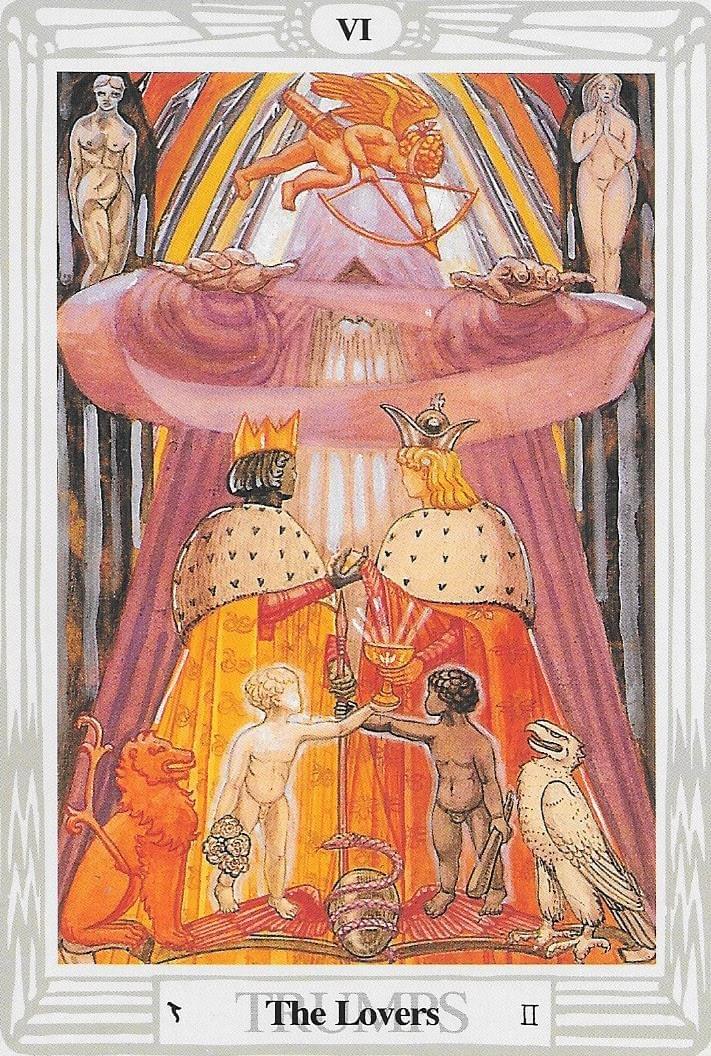
The Lovers — The Union of Opposites
On the Path of Zain, The Lovers express the drama born of the Fool’s division: the moment Spirit perceives itself as Two. This is the mythic polarization of consciousness—light and shadow, self and other, masculine and feminine, heaven and earth. The Lovers embody the tension that makes awareness possible: Love as the magnetic field of duality.
It is here that the mystery of the Tetragrammaton unfolds within the psyche:
Father and Mother unite to produce the Son and Daughter, and in their exchange the Universe perpetually renews itself. The Fool’s laughter becomes the heart’s longing; the joy of wholeness veils itself in desire.
Yet the goal is not eternal romance, but gnosis through relationship—to recognize that all love is the mirror through which the One reclaims Its own face.
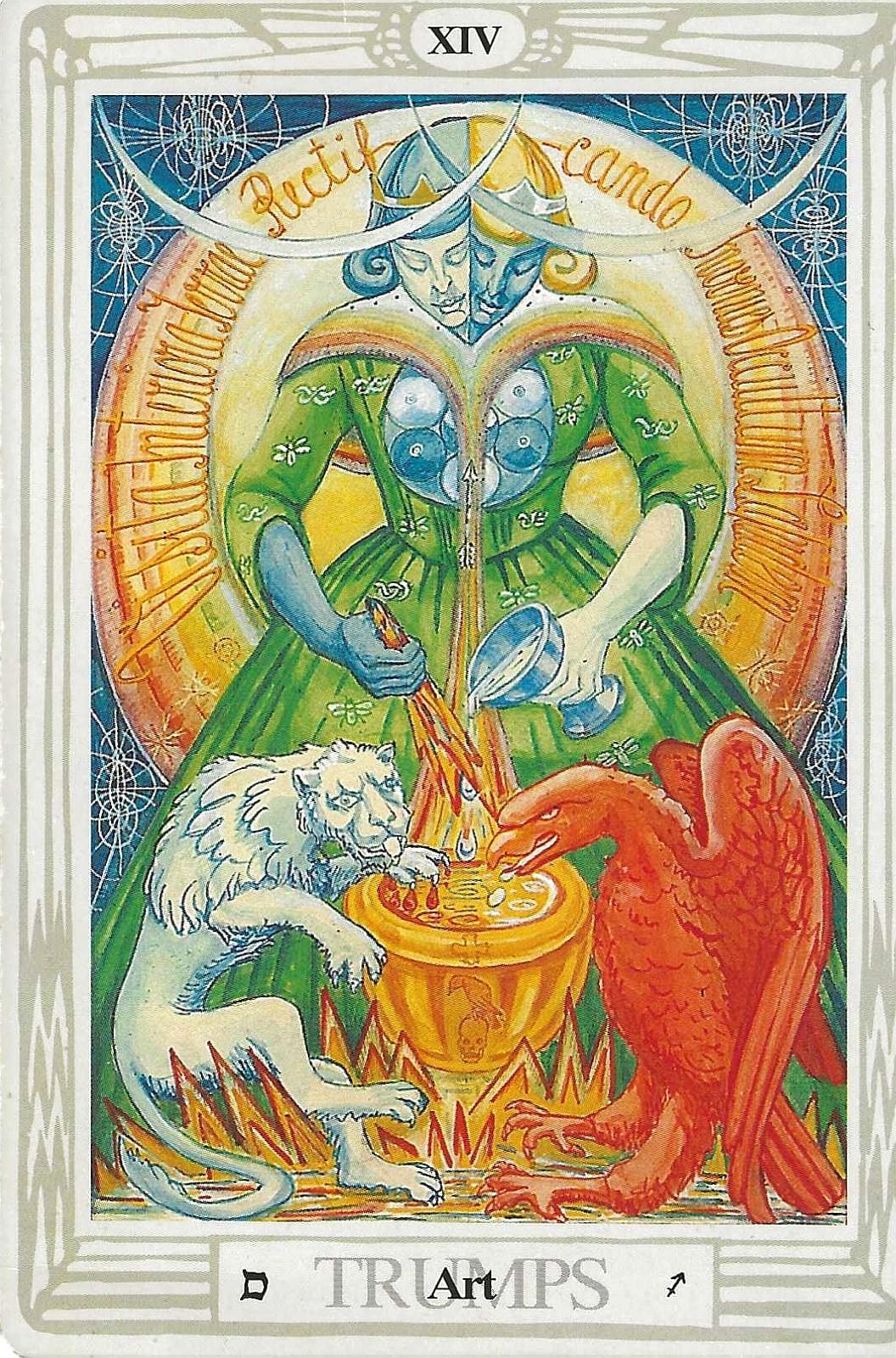
Art (Temperance) — The Alchemy of Return
Following the Lovers’ division, Art (Samekh) reveals the alchemy of reunion. The figures of Sun and Moon, King and Queen, Fire and Water, mingle their essences within the golden cauldron of consciousness. This is the reconciliation of opposites, the divine chemistry that restores equilibrium after the experiment of polarity.
In the Art card, the lemniscate of the Fool has now become a continuous current of circulation—the ouroboros of Spirit endlessly consuming and renewing itself. Here, the Fool’s “0” has not vanished but has learned rhythm; it has become the pulse of divine breath manifesting as perpetual balance.
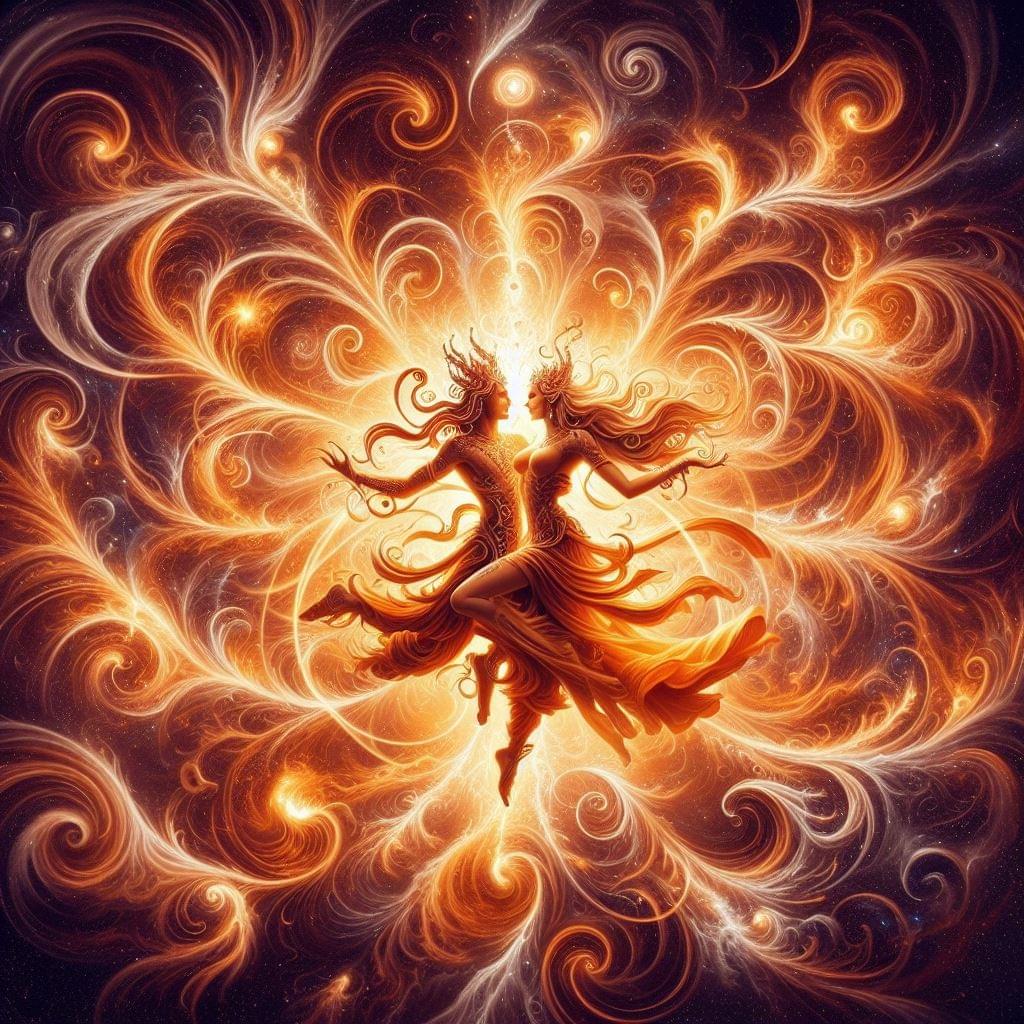
The Pulse of Manifestation
Thus, 0 = 2 is not a paradox to be solved but a heartbeat to be felt. It is the secret rhythm of the Fool’s dance, the Lovers’ embrace, and the alchemist’s blending in Art. Through this rhythm, the Universe remains stable by motion and eternal through change.
Each being, every soul, is a miniature lemniscate—a coil of the Infinite experiencing itself as form, only to return to formlessness. In every inhalation, we repeat the Fool’s emergence; in every exhalation, we mirror the Art of return. To live consciously is to move in harmony with this cosmic respiration, to know oneself as both breath and breather, dancer and dance.
Hermetic Reflection
“The Fool’s circle becomes the Lovers’ two,
and their two become the alchemist’s one.
Love is the motion of the Infinite—
the laughter of the One who never ceased to be.”

The Sacred Stranger: The Fool as Divine Madness
Throughout the ages, respect for the wandering madman, fool, or lunatic has endured as a sign of humanity’s secret remembrance that Divinity often walks in disguise. In the villages of medieval Europe it was said, “This queer stranger? Let us entreat him kindly, for it may be that we entertain an angel unawares.”
The Fool’s garb of folly conceals the radiance of the Holy One. His laughter hides the thunder of the Logos. Wherever a soul wanders freely, unbound by convention and uncorrupted by fear, the world encounters a glimpse of the Original Spirit before definition—the Aleph that forever renews creation through innocence.
In many Eastern lands this reverence still abides. The mad ascetics, avadhutas and sadhus of India, or the eccentric Taoist immortals of China, embody this same current of divine insanity. They have stepped outside the collective hypnosis of the world and become living symbols of the Zero, the human reflections of the unconditioned. Their very presence destabilizes the illusion of order, reminding others that the Universe itself is play (Lila), not prison.
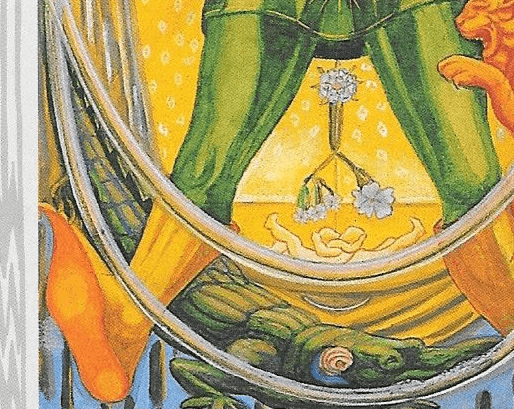
The Fool’s Mythic Lineage
To glimpse the deeper cosmogony of the Fool, one may look to a series of mythic figures who each carry this energy across cultures:
Percival, the Pure Fool of the Grail Mysteries, who by his innocence attains the Vision that the learned knights could not. His naïveté is his initiation; his unknowing the vessel of revelation.
Mako, the Son of Set—or Sebek, the Crocodile God—symbolizes the primal life-force arising from the waters of chaos. The crocodile, ancient and unchanging, is the Fool’s instinctive wisdom, the hidden intelligence of survival and rebirth.
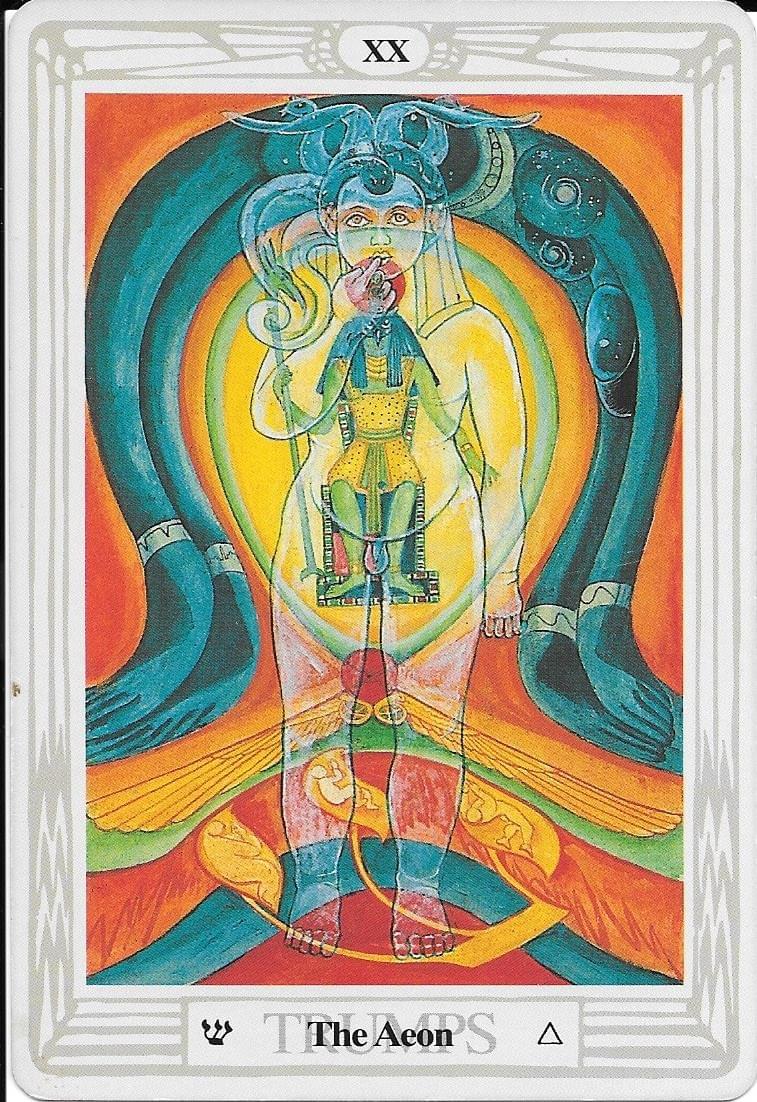
Hoor-Pa-Kraat (Harpocrates), the Silent Babe seated upon the Lotus, embodies the cosmic infancy of Spirit: the potential before articulation, the power of the Word yet unspoken. His finger to his lips reminds us that true wisdom lies in the silence before sound—the Fool’s native realm.
Each of these beings personifies an aspect of the Fool’s divine paradox: the wisdom of unknowing, the purity of primal will, and the silence before manifestation. They are the Fool’s lineage—the saints of the Abyss who bear madness as their halo.

The Paradox of Divine Madness
To the worldly mind, such beings appear chaotic, irrational, or mad. Yet to the adept, this madness is the highest order of sanity: consciousness freed from confinement in reason alone. The Fool’s “lunacy” is lunar—fluid, reflective, and responsive to tides invisible to common sight. The Fool dances to the rhythm of the unmanifest, his steps guided by the breath of Kether itself.
Thus, the Fool is both the Holy Madman and the Silent Child, both the Wandering Stranger and the Hidden God. He is the seed of every revelation that overturns the old order; the spark of inspiration that cannot be domesticated by logic.
Hermetic Reflection
“Beware the beggar who laughs at the gates of the city,
for he may carry the Crown of Kether beneath his rags.
The Fool is the Stranger whom the wise salute,
the Silence before the Word,
the Madness that births new worlds.”


The design of the Thoth Fool card represents many mythological explanations of this Principle:
- The Thoth Deck Fool has the horns of Dionysus Zagreus, and between them is the phallus cone of white light---indicating the influence of Kether-Crown, upon him.
- His background is Air, drawing from Space and his attitude is that of one bursting unexpectedly into the world. A good simile for Time.
- He is clad in the Green of Spring and wears the Phallic gold shoes of the Sun.
- In his right hand is the Wand tipped into a pyramid of white---simulating Kether.
- In his left hand is the flaming pinecone, indicating vegetable growth under the same Fiery influence of the White light, as well as the Grecian cone topped Wand of Dionysus known as the Thyrsus.
- From his left shoulder, hangs a bunch of bagged grapes, representing sweetness, fertility, and the basis for ecstasy (Ecstasy gave birth to the Universe); shown by the stem of the grapes forming into rainbow hued spirals; The form of the Universe as a collective.
- Upon this spiral whorl are other attributions of the "godhead"; the vulture of Maut, the dove of Venus (Mari, or Isis) and the sacred ivy of the Devotees of the Green Man.
- There is also a buttery fly of many-colored air, a symbol for the Soul and the winged globe with its twin-serpents, which is echoed by the twin infants embracing on the middle spiral.
- Above is the benediction of three flowers in one (Kether, Chokmah, Binah).
- The tiger (fear) is fawning unnoticed on his leg.
- And beneath his feet runs the Nile with lotus stems and a crouching crocodile (Sebek).
The whole Fool card is a glyph of the Creative Light which is Dark Energy and unseen by the naked eye.
Unless there are many surrounding cards of a very spiritual nature or the position of the Fool card is thrown into a highly spiritual position in the reading, a more mundane reading of the Fool card is often warranted.
Elucidation on Dionysus Zagreus
Classical Understanding:
Dionysus Zagreus is an earlier, mystical form of Dionysus, deeply tied to the Orphic Mysteries — secret initiatic teachings that greatly influenced later Western Esotericism, Neoplatonism, and even Qabalistic thought through Renaissance Hermeticism.
Zagreus appears in the Orphic myths as a primordial Dionysus, the son of Zeus and Persephone (Queen of the Underworld).
Zeus intended Zagreus to inherit the cosmic throne. But the Titans, jealous and enraged, lured Zagreus with toys and then dismembered him, cooked him, and ate him.
Athena saved his heart and gave it to Zeus, who implanted it into Semele, leading to the second birth of Dionysus as the more familiar wine god — but forever carrying the scars and powers of death and rebirth.
Thus, Zagreus embodies:
Sacrificial death (destruction by the Titans),
Dispersal into matter (Titans are seen as representing the chaotic material forces),
Resurrection through divine love and Will (Zeus preserving the heart),
Dual identity: Dionysus becomes both celestial and chthonic (underworldly).
Hermetic and Western Mystical Insight:
Zagreus is a profound archetype for the Solar Self being scattered into matter — the soul falling into incarnation — but carrying a secret, indestructible divine spark (the "heart" preserved by Athena).
From a Hermetic Qabalistic view:
Zagreus = the Tipharethic Solar Child (the Beauty born from destruction and unity).
The Titans = forces of separation, division, entropy — the Qliphothic shells that veil spirit.
The dismemberment = the shattering of Divine Unity into the Many (very akin to the "Shattering of the Vessels" in Lurianic Kabbalah, the Shevirat ha-Kelim).
Thus, the Orphic Initiate — and by extension the Hermetic Adept — seeks to:
Recognize the scattered divine sparks in the material world (pieces of Zagreus' body).
Undergo inner death and rebirth (following Zagreus' path).
Recover and reassemble the Divine Self through theurgy, gnosis, and the Great Work.
Forward-Thinking View:
In modern Hermeticism, Zagreus-Dionysus can be seen as the symbol of the holographic soul — fragments of divine consciousness embedded in every living being and in every cell of matter.
His myth reminds us that trauma, fragmentation, and descent are not punishments, but initiations into self-recollection and divine awakening.
Dionysus Zagreus represents Self-Mastery through Ordeal — the conscious embracing of death (ego death, loss, darkness) as a necessary step to achieving true gnosis.
This myth also hints at the sacredness of embodiment: although scattered in form, the Divine is present in every atom. Even the body itself becomes a temple once the "heart of Zagreus" is remembered within it.
✨ Summary Reflection:
Dionysus Zagreus is the archetype of the Solar Spirit fallen into the labyrinth of matter, broken into pieces by the forces of division, yet destined to rise again through the act of conscious remembrance, love, and divine Will.
He is the Secret King, the Heart that cannot be destroyed, the Lucid Dreamer buried within the dream of physical existence — awaiting the moment of rebirth into full awareness.
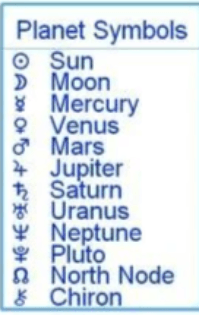
The zodiac sign of Uranus is applied to this card, implying eccentricity, anarchy, and originality.

Uranus, in astrology, is known as the planet of sudden change, innovation, rebellion, and revolution. It is associated with breaking free from traditional structures, sparking new ideas, and bringing unexpected developments. Here’s a breakdown of its key characteristics:
1. Revolution and Change
Uranus is often referred to as the Great Awakener, signifying disruption, breakthroughs, and sudden transformations. It brings unexpected events that can shake up the status quo, often forcing people or societies to evolve or rethink established norms. It governs revolutions—both personal and societal—prompting liberation and new ways of thinking.
2. Individuality and Freedom
Uranus is deeply connected to the pursuit of personal freedom and individuality. It encourages people to express themselves uniquely, often defying conventions or societal expectations. People with strong Uranian influences in their charts often have a need for independence and resist being confined by rules or authority. Uranus energy pushes individuals to redefine themselves on their own terms.
3. Innovation and Technology
As the planet of innovation, Uranus governs technology, science, and progressive thinking. It is often linked to new discoveries, inventions, and advancements in fields like electronics, space travel, and humanitarian efforts. Uranian energy fosters a forward-looking, experimental approach to life, favoring creative problem-solving and embracing the cutting edge.
4. Unpredictability and Disruption
Uranus is known for its unpredictability. Events or influences governed by Uranus tend to happen suddenly, without warning, and can feel disruptive or chaotic. This energy can break down old patterns or ways of thinking that no longer serve growth, even if the process feels unsettling. Surprises—both positive and negative—are often Uranian in nature.
5. Progressive and Humanitarian Causes
Uranus is also associated with social reform and humanitarianism. It rules Aquarius, a sign known for its focus on community, progress, and collective well-being. Uranus inspires efforts to create a more equitable and just society, making it connected to activism, civil rights movements, and efforts to break down social hierarchies or oppressive systems.
6. Detachment and Objectivity
Though Uranus brings change and revolution, it can also manifest a sense of emotional detachment. Uranian energy is often more focused on intellectual or ideological causes than on personal or emotional issues. It values logic, rationality, and seeing things from a higher perspective, sometimes making it seem cold or aloof.
Key Themes of Uranus:
- Freedom and Independence
- Sudden, Unexpected Change
- Innovation, Technology, and Invention
- Rebellion Against Authority
- Social Progress and Humanitarianism
- Eccentricity and Uniqueness
- Revolution and Breakthroughs
Astrological Placement
- Signs: Uranus rules Aquarius, a sign known for its futuristic, intellectual, and community-focused traits.
- Houses: Uranus's influence in a particular house of a natal chart highlights the area of life where sudden changes, innovation, and the need for freedom are most likely to manifest.
- Aspects: When Uranus makes significant aspects to other planets in a birth chart, it can bring a rebellious, independent, or innovative flavor to those planets' energies.
In summary, Uranus represents the urge to break free from old structures, to rebel against stagnation, and to foster progressive change. Its influence is both liberating and disruptive, offering the potential for personal growth through innovation, new perspectives, and radical transformations.
The Fool represents the true mystery of the Soul, and that each of us are unpredictable and often uncertain what we are going to do or risk next. We just merrily go forward, come hell or high water and trust we will somehow muddle through. In such endeavors of the unknown, we are all Fools, and happy to be so!
All that applies to the Thoth -0-Fool, also easily applies to the Mystic Palette Tarot-0-Fool.
If you have any questions about this blog, or about Tarot cards , Tarot readings and/or Western Hermetic Thoth Tarot classes just click on the below chat button for expert answers.
When thrown during a reading, the Fool represents.
- Ideas, thoughts, spirituality, and that which endeavors to rise above the material world.
- However, if the question of the querent is regarding a material event of ordinary life, this card is not well defined. Herein, it shows folly, foolishness, stupidity, eccentricity and even mania.
- The Fool is too ideal and unstable to be good in material things.
- The Fool is more about a willingness to "Throw oneself into the Abyss of the Unknown" rather than operating in a reasonable manner.
- Returning to the innocence of the "child within".
- The hero's or heroine's journey begins.
- Impetuousness.
- Unpredictability.
- Risk taking.
- Growth.
- Creativity.
- A jokester who loves to pull pranks.
- Creativity.
If surrounded by negative cards (Thoth) or if Reversed (The Medieval Feathers Tarot).
- You are having trouble committing to a relationship or project and just want to run away and do senseless things.
- The parrot's feather advises you to abandon old habits and adopt new ones that allow you to discover new things that you are curious about.
Thank you for your interest, comments, and supportive donations. May you live long and prosper!
3 Western Qabalistic Magick websites assisting people in becoming more magic and less tragic since 2010.
